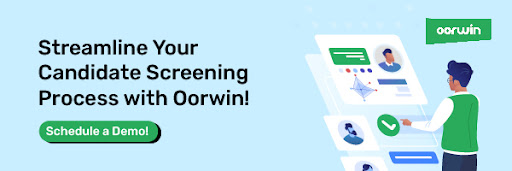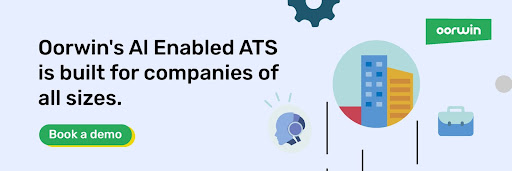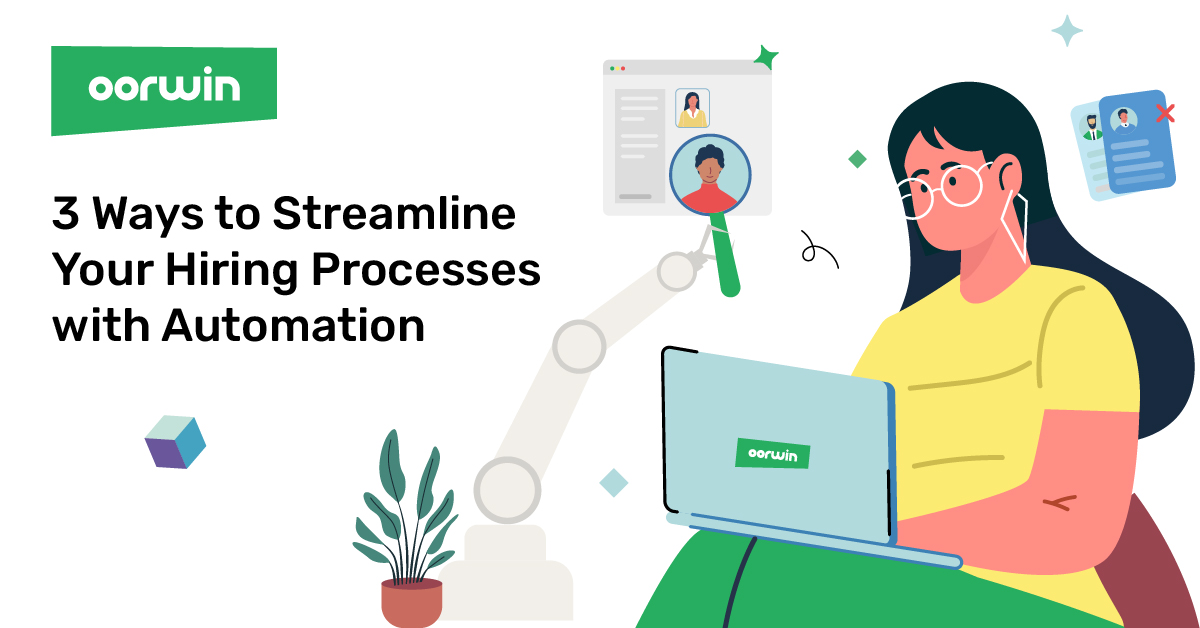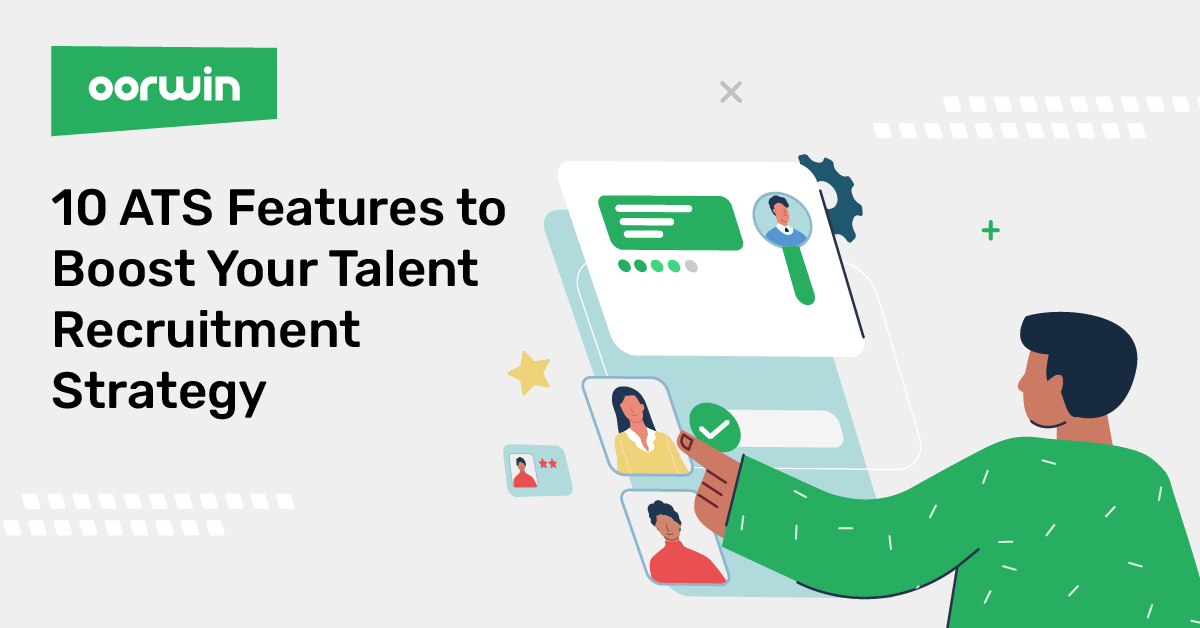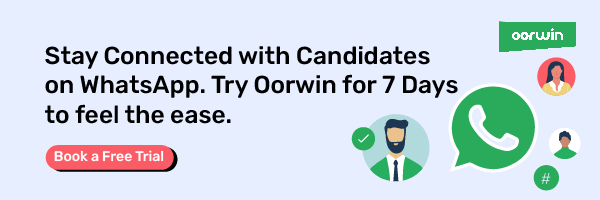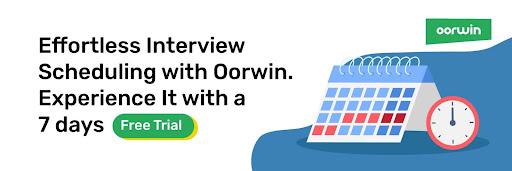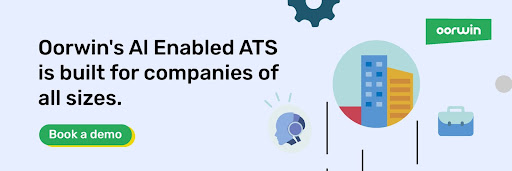Transform your hiring process with an AI-Powered Applicant Tracking System (ATS). This innovative tool offers benefits from time and cost savings to an improved candidate experience. Read on to discover the top 10 compelling reasons why an ATS is a must-have in today’s competitive recruitment landscape.
Benefits of an Applicant Tracking System for Recruiters
In the rapidly transforming staffing industry, advanced technological solutions are necessary to stay ahead of the curve and acquire the benefits of an applicant tracking system (ATS) to achieve hiring objectives. Recruiters need all the tools to expedite their processes and hire the best candidates. An AI Powered Applicant Tracking System (ATS) is one of these innovative solutions that recruiters are asking for. Applicant tracking System benefits companies by saving time and resources.
What is an Applicant Tracking System?
An AI-applicant tracking system (ATS) is software designed to help recruiters and hiring managers optimize the entire recruitment process. Benefits of an Applicant Tracking System include allowing recruiters to source, manage, and process all candidate data while providing a number of tools to better understand, search, and filter applicants. It also enables you to sort and categorize the resumes and applications received based on keywords and criteria of your choosing so you can better understand which candidates are more suited to the position you are hiring for.
Top 12 Benefits of Applicant Tracking System Every Employer Should Know
As an easy-to-use tracking platform, an ai-enabled applicant tracking system (ATS) helps recruiters find and hire candidates in an organized and simplified way. Ready to learn how? This blog will dive deeper into the benefits of the Applicant Tracking System and how it helps businesses achieve a competitive advantage in the fast-paced staffing industry.
Save time and money on recruiting
Improving recruiter productivity is a top priority for hiring teams. One of the most impactful applicant tracking system benefits is significantly enhancing this productivity. The faster recruiters can comb through resumes, the faster they can fill open positions. Automation, another one of the key benefits of ai enabled applicant tracking system (ATS), is essential for expediting processes and saving time. Another pivotal benefit of an Applicant Tracking System is its capacity to automate labor-intensive and time-consuming tasks like:
- Publishing open positions on job boards and social sites
- Automating follow-up emails
- Tracking candidate responses
These automated tasks are not only time-savers, but they are also far more reliable and accurate than manual data entry. These applicant tracking system benefits can boost recruiter productivity by up to 80% and reduce the cost-to-hire by 60%.
Streamlined Application Process
The benefits of an applicant tracking system not only include time savings for recruiters but also the quality of the application process is enhanced, ensuring a professional and reliable platform for applicants. A well-designed AI-enabled Applicant Tracking System offers an intuitive application guide for candidates, making the process quick and efficient.
Improve the candidate review process
Filtering out applications and analyzing resumes is a hectic process. An intelligent Applicant Tracking System benefits recruitment teams with simple tools to automate steps like screening, filtering, and ranking candidates.
The ATS can auto-parse resumes, rank candidates by customizable criteria, and display data for easy comparison. Powered by semantic search algorithms, it reduces bias and ensures no candidate is missed, aiding in optimal placement decisions.
Streamlines Job Posting
Finding the ideal candidate requires accessibility and open position notifications, a time-consuming process. Applicant Tracking Systems simplify this task, allowing one-click job posting. Manual account logins and analytics tracking are no longer necessary.
Improved internal & external communication
Improved internal & external communication is another one of the essential benefits of an applicant tracking system. Team members and managers involved in the recruitment process can add notes, ask questions, mark details, and track everything about applicants in the ATS dashboard. This ensures that all information on a potential candidate can be found in one place.
For external communication, ATS can automate tasks like scheduling and preparing for interviews. The platform offers a calendar feature, allowing candidates to select their preferred interview times, and automatically sends out a pre-written agenda for preparation.
Reporting and actionable talent analytics
An AI enabled Applicant Tracking System (ATS) benefits extend to generating data-backed reports and customized analytics to help hiring managers and recruiters easily monitor the effectiveness of their job postings. The reports track click-through rates and engagement, while semantic search in the ATS collects applicant demographics and key traits.
Users can monitor recruitment-based KPIs in an ATS. This boosts recruiter productivity and consolidates processes, helping businesses optimize their investment in time, money, and effort while gaining insights into the talent market.
Increase candidate outreach
The benefits of an applicant tracking system also include increased candidate outreach. Posting open jobs on different platforms increases the chances of engaging and hiring the right candidate. However, selecting the platforms and following the registration process of each site can be time-consuming. An ATS quickly shares a consistent and branded job posting across each site and the company’s website, making it easy for potential candidates to find and apply for job postings.
Provide a better candidate experience
One of the key benefits of an Applicant Tracking System (ATS) is its capacity to provide a better candidate experience. Today’s candidates expect a fast and efficient application process, and an AI Applicant Tracking System meets these demands effectively. The system streamlines every step, from clear instructions to automated follow-up emails, significantly improving the candidate’s interaction with your company’s hiring process.
In addition, another benefit of ATS is that it allows the candidates to track their application status, ask questions, and receive updates from recruiters. By providing a positive experience for applicants, companies can improve their brand reputation and increase the likelihood of attracting top talent in the future.
Enhance collaboration and teamwork
One of the striking benefits of an application tracking system (ATS) that often gets overlooked is its role in enhancing collaboration and teamwork. An ATS makes it easy for teams to collaborate on the recruitment process. Hiring managers and recruiters can share notes, discuss candidates, and make decisions together.
Additionally, an ATS provides a centralized location for all recruitment-related data so everyone involved can stay on the same page and work more efficiently.
Support compliance with legal requirements
An ATS can help ensure that a company’s recruitment processes comply with relevant laws and regulations. An ATS allows companies to avoid discrimination, ensure equal opportunity for all candidates, and maintain a legally defensible hiring process by providing a consistent and transparent process.
This is particularly important for companies operating in regulated industries, such as finance and healthcare, where compliance with legal requirements is critical.
Provide valuable insights and data
An applicant tracking system collects data on the entire recruitment process, from job posting to candidate selection. These benefits of an applicant tracking system enable companies to make data-driven decisions to refine and improve their recruitment efforts continually. This data can provide valuable insights into the company’s recruitment strategies, allowing the companies to make data-driven decisions to improve their recruitment efforts.
Facilitating Remote Hiring
In today’s global job market, an ATS enables remote hiring by allowing recruiters and candidates to connect and complete the hiring process from anywhere. It streamlines the entire recruitment process, from application to onboarding, making it easier to hire candidates from different geographic locations, ultimately expanding the talent pool and promoting diversity in the workforce.
Benefits of ATS: Makes it Worthy to Invest In
The benefits of an Applicant Tracking System (ATS) make it an invaluable tool for recruiters. From saving time and money to improving candidate experience, an ATS allows you to stay ahead of the curve, meet your objectives, and make better hires in less time.
Are you ready to experience the benefits of an ATS? Request a demo with Oorwin today.
Frequently Asked Questions
What is an AI applicant tracking system?
An AI applicant tracking system is a type of recruitment software that uses artificial intelligence to automate and improve various aspects of the recruitment process.
How does an AI applicant tracking system improve the candidate experience?
An AI applicant tracking system can improve the candidate experience by providing a more personalized and efficient recruitment process. This can include personalized communication and real-time feedback on the candidate’s application status.
How do I choose the right ATS for my organization?
When selecting an ATS, consider factors like ease of use, scalability, integration capabilities, and specific features that meet your organization’s unique recruitment needs. Many vendors offer demos or free trials to help you make an informed decision.
What benefits can I expect in terms of recruiter productivity with an ATS?
An ATS automates manual tasks, allowing recruiters to focus on more strategic activities. This can result in an 80% increase in recruiter productivity.
How does an AI applicant tracking system reduce recruitment costs?
An AI applicant tracking system can reduce recruitment costs by automating repetitive tasks, such as resume screening and scheduling interviews, saving recruiters time and resources. Additionally, an ATS can also help to reduce the time-to-hire, which can ultimately decrease recruitment costs.

